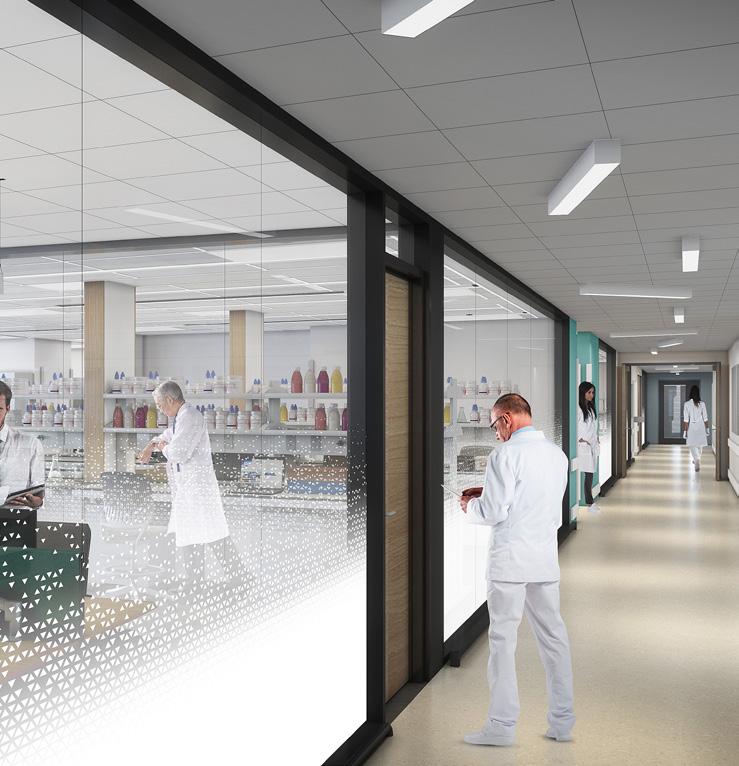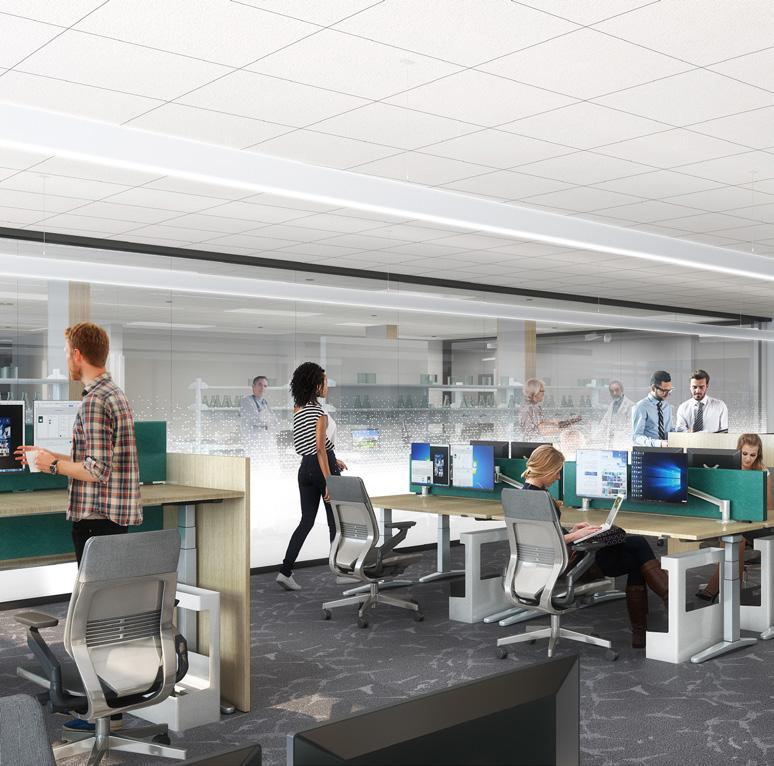
1 minute read
SCIENTIFIC WORKPLACE
SCIENTIFIC BREAKTHROUGHS ARE THE PRODUCT OF TEAMWORK— SO THE SCIENTIFIC WORKPLACE SHOULD REFLECT THAT REALITY
Strategic design strategies help create the flexible environment necessary for consolidating multiple R&D and administrative groups in a new scientific workplace.
A multi-national pharmaceutical manufacturing firm, is consolidating eight seperate sites to create a premier life sciences campus and their North American research hub on a new mixed-use, transit-oriented development adjacent to Kendall Square in Cambridge, Massachusetts.

As researchers from across departments and disciplines would all be working in this single location, HOK’s lab planners pursued an activity-based workplace that could support the needs of a diverse mix of teams and individuals.


The design team developed and implemented a unique user surveying tool to help identify the most accurate collaboration and laboratory activity of the various groups. The data collected then informed the research neighborhood concepts that could best support flexibility, sharing, collaboration and innovation between the different departments.









